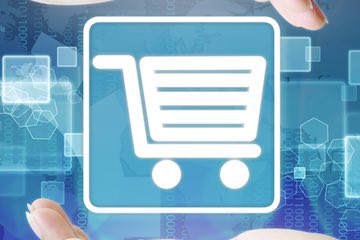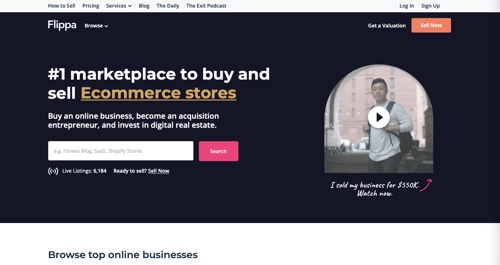Social distancing and self-isolation recommendations are decisively affecting the way we entertain ourselves. People turn to online audio and video streaming services like Netflix, Amazon Prime and Spotify. With event venues, cinemas, museums (and even Disneyland) shutting down, businesses are forced to adapt and move their services online. 2500 museums and galleries now offer virtual tours people can enjoy from home.
The highest stress levels are usually before an official lockdown (or self-imposed isolation period), during the initial stages of the infection spreading. That’s 5 to 7 days before the government takes official measures and when the media noise is intensifying.
My personal experience was no different. I went shopping with my dictated shopping list and if I couldn’t find the exact product I needed, I went for something else that had a green or blue design and disinfecting properties. You may laugh at me now… but I had a happy wife and a sense of protection for my family hard to explain if you didn’t experience this yourself. The image below might explain my situation a little better. Which cleaning product would you have picked in this time of crisis? I mean color theory is all good and well, we can laugh about it and it’s surely not science… But yes, I picked the blue one (my brain says it’s cleaner). Screw the green panda this time…
But ecommerce will continue to grow only if businesses can adapt and maintain a high level of quality service. Part of that is adopting new guidelines for delivery services. Here in Spain, we had four deliveries in the last days, all highly professional and respectful. We learned from the situation in China, where 85% of internet users avoided crowded public places when the virus was spreading. In the lockdown areas (or where self-isolation is recommended), we can expect ideas like contactless delivery to gain traction (see below).
Having people stuck at home isn’t all bad news though. Air pollution levels in heavily impacted nations like China and Italy have dropped since the outbreak.
Stage 1: Fear and Instincts Rule the First Days Pre-Lockdown
Established carrier companies like UPS make efforts to reassure consumers they follow proper disinfecting measures and that shipments are safely handled and dispatched:
The WHO and CDC have stated that the likelihood of catching the COVID-19 virus by touching cardboard or another shipping container is low.
On Sunday March 15th, the Spanish Prime Minister Pedro Sánchez announced the full-blown lockdown. Although we were already in isolation, we still had lots of new questions. Our spending on discretionary goods came to a halt, outside of essential goods and services.
In European countries like France, Spain, Italy, heavily affected by the pandemic, we recently started seeing massive changes in online retail shopping compared to previous years. Online purchases are up 60% to 90%, according to this article from Nielson from March 16, 2020.
Our social media blew up. There was more activity in our neighborhood Whatsapp group and we started organizing playdates for the kids, not realizing that we would be in lockdown 24 hours later. We became more preoccupied with in-home entertainment and went on a small inspection of the stock of paper, drawing material and toys for the kids. We thought we could have access to the local retail stores a little longer.
I started feeling more protective towards my family and it seems like I’m not the only one, according to this study from Forbes. Forty percent of men agree that the news is impacting what products they are purchasing, versus only 34 percent of women. When asked about the kinds of products respondents were purchasing more, a higher number of men vs women reported buying more:
Pricing is less of an issue at this stage. Having the product in hand is more important than how much it costs. Grocery and self-care goods are the consumers’ preference at this time. Online shopping is on the rise, and this may puzzle ecommerce managers, SEO and optimizers, as there’s a large influx of first-timers / non-regulars and growth metrics are off the charts.
In 2008, I ran an online lead generation company called OrangeRepublic. When the financial crisis hit, traffic dropped almost overnight. Really, 50% less traffic! All high-end software investments just stopped. I had recently moved to Mexico and had a young daughter; it was scary! But my co-founder Claudiu and I ended up winning double conversion rates, thanks to a set of WordPress plugins we made for personalization and behavioral targeting. This turned into Convert a year later, so technically our second financial crisis changed our lives. What was the first one, you ask? That’s a whole ‘nother story you can find in this podcast with Omer Khan (or listen to it below).
During stage 1, most people don’t know what the SARS-CoV-2 virus is and how it spreads. There are some light social distancing restrictions in place and large events are cancelled. Social media are buzzing with wild stories from people that believe that governments aren’t appropriately projecting the financial impact and that countries’ economies will collapse.
At this stage, the infection isn’t widespread (or the true numbers aren’t revealed yet), or it may seem like it’s an event distant from you (in my case, we started hearing about the escalating issues in Madrid). People are getting nervous because of all the conflicting rumours they hear. The government starts pushing reassuring messages. Local retailers start dealing with shortages, especially in the canned food sections.

Ecommerce Businesses, Prepare For These New Opportunities (and Disruptions) During Stage 1:
- The industries that do well need to prepare their websites for an abrupt increase in traffic.
- The healthcare and wellness businesses that provide hygiene and essential wellbeing products need to be prepared to cover growing demands.
- The industries that are hurt by the pandemic need to adapt and communicate alternative channels.
- All businesses need to provide clear shipping and delivery information to new potential customers (including a lot of first-timers!).
- Ecommerce businesses should turn off price matching algorithms (they won’t work).
- To provide better customer care, increase online and phone support staff.
- In these stressful times, regular marketing tactics don’t cut it anymore. Don’t send your usual newsletters and reconsider your ad copy and images.
- Don’t forget to check the metrics on sign-ups and make sure everything’s working.
Stage 2: Social Distancing Boosts Online Retail
In our case, when we saw the number of cases skyrocketed, and the government announced that the schools would close, we realized the impact on the medical system. Mass gatherings and events were now cancelled. We realized that the 1% death rates would rise in Spain too, in case there was an overflow of cases in hospitals and limited equipment to treat them.
Still, panic buying is putting a lot of pressure on the stocks of high-demand products, especially for brick-and-mortar stores. We see a rise in e-grocery delivery purchases through apps like Instacart, Walmart Grocery and Shipt. In the last month, Walmart Grocery app downloads went from 20,000 to 50,000 a day. But with most of these services not available in a small Spanish town, people have to get creative! To get home deliveries, they just contact the owners of the businesses on Whatsapp and get the deal done. With or without apps, people come up with solutions!
In this second stage, we go into reactive mode and health management becomes a priority. We focus on purchases to prevent catching the virus and spreading it to others, such as face masks, hand sanitizers and disinfectant products.
Restaurants, cafes, and bars are closing their venues. To stay afloat, many providers are turning to home delivery services, especially through apps like Uber Eats, Postmates or Grubhub. To protect providers, customers and delivery staff, these apps are also rolling out new options to limit contact while making deliveries.

SupermarketNews shared that “at this stage consumers engage in proactive health-minded buying, showing increased interest in products supporting maintenance of health and wellness. This comes with news of local COVID-19 cases tied to people arriving from an infected country, according to Nielsen”
In the US, Instacart also announced its sales went up 10 times over the past weeks and 20 times in states like California and Washington that are more affected by the outbreak. The company is also rolling out a “Leave at My Door Delivery” feature to limit contact between shoppers and delivery staff:

Some mobile shopping still happens in this stage, but since it’s not yet clear if local delivery works, what delivery companies operate and if you can even reach the postal office or PO box, hesitation to buy is increased.

Emarketer also thinks ecommerce will continue to grow after the outbreak. Here’s what they shared in March 14th, 2020:
As you can see in these numbers in SupermarketNews, stage 1 consumer behaviors tend to be irrational. It’s all about primal instinct and fear-based decisions.
For most countries, lockdown means only essential activity is permitted: grocery shopping, going to the pharmacy, dealing with utility emergencies like plumbing and electricity, and using gas stations. These restrictions may vary depending on the region, but with the number of COVID-19 infections on the rise, people worldwide are forced to follow them.
New Opportunities (and Disruptions) for Ecommerce Biz During Stage 2:
- If you’re in an industry that does well, prepare for a surging demand in fulfillment and supply chain challenges.
- If you’re in an industry that is affected, communicate the contingency plans you have for the business to your staff.
- Don’t push out offers anymore, everything you push now will sound inauthentic. Instead, focus on being more transparent with your customers and provide community support.
- Educate customers and help them understand how your product will assist their lives in the next 3-4 weeks of lockdown.
- Once isolated, customers will focus on house errands so make sure they have everything they need.
- If you’re selling supplements like Vitamin D or C, stock up. Beneficial immune system vitamins will be in higher demand than ever.
- Start communicating more about the availability of your service and support provided.
- Check all your email flows and their CTAs — do they still make sense?
- Place an emphasis on hygiene measures (if it makes sense for your industry).
Stage 3: Full-blown Lockdown & Implicit Restrictions
Schools, malls, restaurants, gyms were forced to close on Friday evening and this came as a shock. Is this for real? Almost instantly, bookings for travel, hospitality, entertainment started getting cancelled. Our local Facebook group was flooded with messages from worried people. Jobs were at stake! Luxury, fashion, accessories, gifts and travel became non issues overnight. It became pretty clear what people’s priorities were. Social media and in-home entertainment use are at an all-time high in this phase. In our family, we downloaded more tablet apps and I’m happy to pay for them as they take my worry away. In-app ads are not appreciated in this house as I’ll need to deal with kids and ads and constantly unlocking the phone. I’d rather pay 10x straight away now than deal with the nuisance over the next few weeks of lockdown. Ecommerce is likely to grow as consumers eschew physical stores and crowded gathering places—but this could create logistical challenges. Over a quarter (28%) of US internet users are already avoiding public areas or travel, and 58% plan to if the situation worsens—and it already has since this survey was conducted—per Coresight Research data. This avoidance is trickling down into shopping: Three-quarters (74.6%) of US internet users said they’d be likely to avoid shopping centers and malls if the coronavirus outbreak in the country worsens, and over half would avoid shops in general. A decline in brick-and-mortar retail, which comprises over 85% of US retail sales, could shift day-to-day shopping to digital channels, like Amazon or other e-tailers, and boost sales—effects already seen by providers like RedMart in Singapore, per CNBC. Further, it could bolster use of omnichannel commerce, like buy online, pick up in-store (BOPUS), for customers who want to shop in-store but avoid crowds. Such a surge in demand for e-tail could overwhelm logistics providers and workers, which might require ecommerce companies to revisit their strategies for order fulfillment and delivery, including potentially slowing down fast-shipping strategies, in order to keep up with surging demand and keep workers safe. It’s worth noting that changes in online shopping habits may be particularly prevalent among older customers—the group most susceptible to the coronavirus and most likely to avoid stores because of it, but least likely to shop online. A shift toward online shopping among this population could provide a short-term boost for sellers, but in the longer term, it may also increase sales if these customers continue shopping online after the outbreak subsides.
Some neighbors started missing the luxuries of their lives pre-lockdown, but I personally started appreciating the things I had. I looked at the fruit trees I planted recently and mulched them well. I took the weeds from the vegetable garden and started calming down. Why? Because now the situation was out of my hands. Me and everyone around me was in the same boat. When I realized travel plans were out the window and my oldest daughter could not fly in for Easter, the acceptance phase started. This reminded me of the Kübler-Ross model that may apply to me now.
For the purpose of this analysis, we took Nielson’s six-stage system and adapted it for ecommerce.
Two days into the lockdown, I started to notice a few trends in our friend circles and online that seemed eerily familiar.
As Convert works with online retailers (who use our A/B testing and personalization tools), we know a thing or two about online shopping (including in times of crisis). Not everyone will come out of this crisis a winner… Still, it’s crucial not to get lost in the day by day dashboard updates that are like the stock market (all over the place). These daily updates from RetailPulse are great, they track real-time conversion rates and revenue by sector, but can end up being anxiety-inducing and not give any real answers or direction past a number. But to understand what to do, let’s look at each stage of “The Lockdown” experience from myself and others around the world.
I’ve been in lockdown since last Saturday, March 14th, in Spain. The first day was self-isolation, but on Sunday the government restricted people from leaving their homes.
For the week ending Feb. 29, Nielsen reported, year-over-year dollar sales at all U.S. outlets jumped 313.4% for hand sanitizers, 475% for household maintenance masks, 114.5% for medical masks, 80.4% for thermometers, 99.6% for aerosol disinfectants, 59.6% for bath and shower wipes, 52.3% for first aid kits and 14.7% for supplements.
People are going back to learning (or practicing) skills they used to outsource, like cooking healthy meals for themselves. The downtime also allows people to go back to their hobbies, learn new languages online, build impromptu home gyms and exercise indoors, play online or video games, or even come up with creative ways to entertain themselves and their families!
Wherever you are in the world, know that better times are ahead. If you’re in ecommerce, hopefully this article helped you understand what’s going on and avoid major disruptions. Check out part 2 to read more about the last 4 stages we’re all going to go through and how to weather the crisis.
I’m not the only one to reframe my purchase decisions. For example, in the US, Nielsen also found that the food and beverages sales for the week of Feb. 29 climbed 322.5% for oat milk, 36.9% for dried beans, 31.8% for canned meat, 158.3% for fresh meat alternatives, 84.4% for powdered milk products, 25.3% for rice, 24.9% for tuna, 11.3% for water and 10.4% for pasta.
What I Noticed in Stage 3 of the Lockdown That May Be Important For You:
- Make sure stock availability is clear at all stages throughout the online purchase process.
- Advertisements and PPC can collect the customers you lost on Amazon. Although Amazon cannot fulfill your order, people might still want your product. Make sure they find it! Take a hard look at your own website now.
- Help customers understand how the product can impact their lives in the next 3-4 weeks of lockdown.
- Add scripts to the checkout stage to detect PO-boxes and notify customers to double check the opening hours of those places.
- Change retargeting campaigns and connect with your existing customers on the channels you use to communicate with them.
- Online education is making a comeback as millions of students are moving their courses online. Education portals will now be able to prove that learning can be done online with a disciplined mindset, immersive experiences and gamification.
- Stop regular marketing activities and change your strategy to help those in need.
- Is there a way for your product to help communities in need? Focus on that and start gifting, lowering prices to relieve the burden on affected communities and make a long lasting impact. Selflessness is the best type of branding.
Over the last week, in particular, we observed a significant surge in consumer adoption and opt-in usage of the feature. Based on the increased demand for this new product feature, we’ve now made it available to all Instacart customers — bringing even more flexibility and optionality to their grocery delivery experience.
Retailers are also forced to change their ways. Amazon hired 100,000 new employees and suspended non-essential deliveries to ensure that essential items like groceries, medical supplies, and household item orders were given priority.
For online retailers, it’s important to know this stage isn’t about logic, but instinct. This is when most businesses need to adapt quickly and provide clear instructions to customers: how fast you can deliver your products during the pandemic, what is the actual use of each product, what’s the science behind them, what efforts you’re making to comply with safety requirements and be a trustworthy provider.








